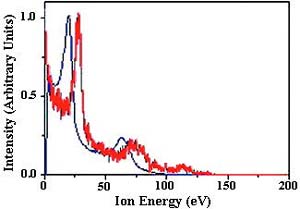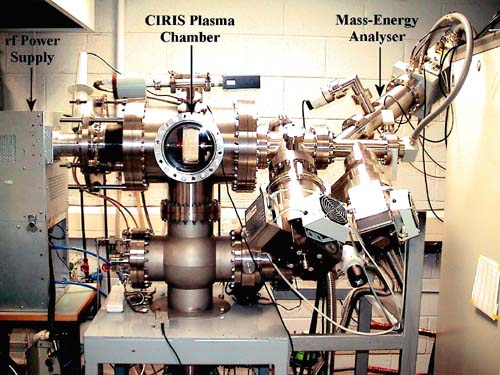| 2004 |

|
YEAR BOOK |
Dublin City University
|
Fusion energy research in the Plasma Research Laboratory
|

With increasing concerns regarding CO 2 emissions from fossil fuels, coupled with the earth's finite oil, coal and gas reserves, Fusion Energy, a source of environmentally benign electricity, is now being included in the Energy Mix for the long-term energy needs of a modern technological society. New political impetus has brought together the governments of nearly 50% of the world's population to build Iter, the next step Fusion Energy research device. The EU is in negotiation with Japan, the USA, Russia, China, Korea and others on the location of Iter, with Provence, France, as a prime candidate.
The PRL participates in the European Fusion Development Agreement (EFDA) which co-ordinates Fusion relevant research in fields such as Plasma Physics, Plasma Control, Material Science, Superconductivity and Sensor-Technology, to name a few. EFDA operates JET, the Joint European Torus, in England, which holds the international record for fusion energy production of over 16 MegaWatts. The PRL draws on a range of experimental apparatus as well as plasma modelling expertise to contribute to the development of 1 MeV ion beams with a cross-sectional-area the size of an office door for application to Iter.

In addition, the PRL has on-going collaborations with large experimental facilities in Europe � including JET in the UK, MANTIS in France and BATMAN in Germany. The university setting allows for a physics-based investigation of basic phenomena, with application at the Mega-Watt engineering facilities of the European partners. This fundamental understanding is used to drive new avenues of investigation at the larger facilities.
Through collaborations, the PRL participates in the continuing development of our basic ideas applied to Fusion Energy research, as well as the spin-off benefits in other fields of applied plasma physics.
For further information contact:
Dr. A. R. Ellingboe, Head of Research, Association EURATOM�DCU;
E-mail: [email protected] ;
Web: http://www.prl.dcu.ie/association ;
EFDA website at www.efda.org